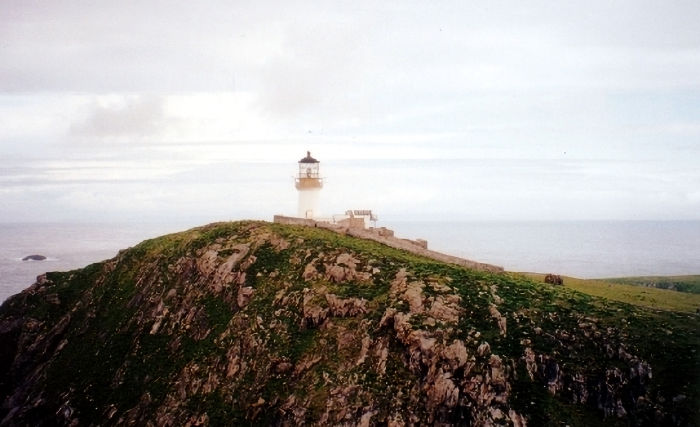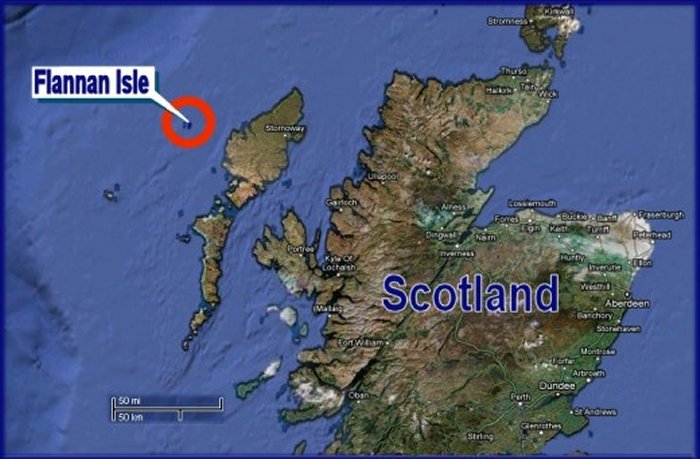Mysterious Disappearance Of Philip Christoph Königsmarck – Where Is The Swedish Count Buried?
Ellen Lloyd - AncientPages.com - Philip Christoph Königsmarck, a Count from Sweden who lived from 1665 to 1694, was a man who had adversaries. Looking back at history, it is obvious some individuals harbored intentions of eliminating him. On the morning of July 2, 1694, Count Königsmarck vanished without a trace. The details surrounding his disappearance and the location of his remains remain unknown to this day.
Count Königsmarck's Forbidden Lova Affair
Count Königsmarck lived an adventurous life, but it was his love affair that got him into trouble.
Following his travels and battles across different regions of Europe, he became a part of Ernest Augustus's service, the Elector of Hanover, in 1689. While in Hanover, he also initiated a romantic relationship with Sophia Dorothea, an acquaintance from his childhood. This marked the beginning of a love affair that would unfortunately culminate in tragedy years later. At the age of 16, Sophia Dorothea had been promised to his cousin, Elector Georg Ludwig, who ascended to the throne as King George I of England in 1714. Chances that Count Königsmarck's and Sophia's love affair would last were slim.
Philip Christoph von Königsmarck aided her in several unsuccessful attempts to flee from Hanover. Known for his romantic relationship with the princess, which is evidenced by numerous love letters now kept at the University of Lund, he was captured and mysteriously vanished from historical records.
Following a rendezvous with Sophia, he mysteriously vanished from Leineschloss castle. Historical analysts speculate that George Louis might have orchestrated his murder, and his remains were likely discarded in a river, possibly the Leine, in Germany. It's rumored that two individuals involved in his death made confessions years later.
Sophia Dorothea divorced her husband in December 1694 and was confined to Ahlden castle. She spent her remaining years there and in the neighboring city until she passed away at 60 in 1726.
In the midst of the divorce process, she confessed her plans to flee under Königsmarck's safeguard to Duke Anton Ulrik of Braunschweig-Wolfenbüttel. However, she firmly denied any adulterous relationship with Königsmarck. The credibility of this claim is somewhat supported by their preserved correspondence - around 300 letters in total. Regardless of these allegations, the legitimacy of her children - future King George II of England (born 1683) and Sofia Dorotea (born 1687), mother to Frederick II of Prussia - remains unchallenged.
The supposed correspondence between Königsmarck and Sophia Dorothea, largely publicized by William Henry Wilkins in his work "The Love of an Uncrowned Queen" (1900), remains a topic of debate. There's no concrete proof that Sophia Dorothea was involved in any illicit affair with Königsmarck, as the authenticity of these letters is questionable. Yet, her alleged guilt or innocence continues to be a captivating topic for romantic narratives and speculation.
Where Is The Body Of Philip Christoph von Königsmarck?
During an excavation at Hanover Castle, also known as Leineschloss (Leine Castle), scientists stumbled upon a skeleton that could potentially shed fresh light on this longstanding mystery. This castle, once home to the kings of Hanover in Germany, has a rich history dating back to the 12th century when it was originally established as a Franciscan Monastery.
Left: Philipp Christoph von Königsmarck (1665-1694). Credit: Public Domain - Right: Sophia Dorothea of Celle (1666-1726). Credit: Public Domain
In the midst of a castle renovation on August 10, 2016, construction workers stumbled upon old human remains buried deep, eight meters under the earth. Specialists were called in to examine these bones and tissue but couldn't pinpoint a cause of death. The initial assumption was that they had uncovered Königsmarck's remains.
However, further analysis revealed a more complex picture - some bones belonged to animals, and the human ones were from at least five distinct skeletons. Unfortunately, none could be definitively linked to Count Königsmarck.
The death and disappearance of Count Königsmarck remains a royal murder mystery.
Mysterious Disappearance Of The Eilean Mor Lighthouse Keepers Remains Unsolved
A. Sutherland - AncientPages.com - On December 26, 1900, something strange and unexplained happened on the largest of the Flannan Islands, Eilean Mor, Scotland.
Three lighthouse keepers disappeared into the night, never to be seen again. Their mysterious disappearance still baffles historians and scientists.
The three lighthouse keepers, Captain Thomas Marshall, James Ducat, and Donald McArthur, vanished on the island without a trace, leaving only speculation behind.
In the remote Outer Hebrides, a small ship was sent to the Flannan Islands. Its destination was the lighthouse at Eilean Mor. Named after St. Flannen, a 6th-century Irish Bishop who later became a saint, the island was completely uninhabited, apart from its lighthouse keepers.
The ship carried supplies and a change of crew, but due to the storm, this was delayed. When the ship arrived at Eilean Mor, there was no sign of the three lighthouse keepers. Captain James Harvey, who was in charge of the supply ship, blew his horn and sent up a warning flare to attract attention, but there was no response.
Under normal circumstances, someone should have been waiting at the front of the lighthouse to welcome the ship.
It all seemed very strange. The lighthouse's interior was as should be, with oil in the lamps waiting to be lit and ashes in the grate. The only thing which appeared out of the ordinary was the two sets of missing oilskins - the outdoor gear the keepers donned.
Only one set remained, belonging to Donald McArthur. Obviously, he had gone outside in a ferocious storm in just his clothes.
This was not only unheard of but also illegal. One of the rules of the Northern Lighthouse Board was that one man must always remain inside the lighthouse. So, why did he leave the lighthouse?
Captain James Harvey quickly sent back a telegram to the mainland, which in turn was forwarded to the Northern Lighthouse Board Headquarters in Edinburgh.
The telegraph read:
A dreadful accident has happened at Flannans. The three Keepers, Ducat, Marshall, and the occasional, have disappeared from the island. On our arrival there this afternoon, no sign of life was to be seen on the Island.
The lighthouse on Eilean Mor of the Flannan Isles. Credit: Marc Calhoun - CC BY-SA 2.0
Fired a rocket but, as no response was made, managed to land Moore, who went up to the Station but found no Keepers there. The clocks were stopped and other signs indicated that the accident must have happened about a week ago. Poor fellows must have been blown over the cliffs or drowned trying to secure a crane or something like that.
Night coming on, we could not wait to make something as to their fate.
I have left Moore, MacDonald, Buoymaster, and two Seamen on the island to keep the light burning until you make other arrangements. Will not return to Oban until I hear from you. I have repeated this wire to Muirhead in case you are not at home. I will remain at the telegraph office tonight until it closes if you wish to wire me.
A few days later, Robert Muirhead, the board’s supernatant who recruited and knew all three men personally, departed for the island to investigate the disappearances.
His investigation of the lighthouse found nothing over and above what Moore had already reported. That is, except for the lighthouse’s log…
Muirhead quickly noticed that the last few days of entries were unusual.
On the 12th of December, Thomas Marshall, the second assistant, wrote of ‘severe winds the likes of which I have never seen before in twenty years.
He also noticed that James Ducat, the Principal Keeper, had been ‘very quiet’ and that the third assistant, William McArthur, had been crying.
What is strange about the final remark was that William McArthur was a seasoned mariner and was known on the Scottish mainland as a tough brawler. Why would he be crying about a storm?
Log entries on the 13th of December stated that the storm was still raging and that all three men had been praying. But why would three experienced lighthouse keepers, safely situated on a brand new lighthouse that was 150 feet above sea level, be praying for a storm to stop? They should have been perfectly safe.
Even more peculiar is that there were no reported storms in the area on the 12th, 13th, and 14th of December. In fact, the weather was calm, and the storms that were to batter the island didn’t hit until December 17th.
The final log entry was made on the 15th of December. It simply read, ‘Storm ended, sea calm. God is over all". What was meant by ‘God is over all’?
Investigators concluded that two of the men must have been outside during the storm and were swept away by the waves.
Donald McArthur then ran out to their rescue but was also swept away. But even the official investigation was mere speculation as no proof of this story has ever appeared, and the explanation left some people in the Northern Lighthouse Board unconvinced.
Many are still wondering why none of the bodies washed ashore?
It is simply as if the three men walked off the island, never to be seen again. Over the following decades, subsequent lighthouse keepers at Eilean Mor have reported strange voices in the wind, calling out the names of the three dead men. Several speculations have emerged, but the fact remains – the mysterious disappearance of the three lighthouse keepers remains unsolved.
Written by Ellen Lloyd – AncientPages.com
Copyright © AncientPages.com All rights reserved. This material may not be published, broadcast, rewritten or redistributed in whole or part without the express written permission of AncientPages.com
More From Ancient Pages
-
 Rasputin – Controversial Mystic With Healing Powers – An Evil Or Misunderstood Man?
Featured Stories | Aug 4, 2018
Rasputin – Controversial Mystic With Healing Powers – An Evil Or Misunderstood Man?
Featured Stories | Aug 4, 2018 -
 Adad ‘Lord Of Abundance’- Mesopotamian Weather God Who Was Responsible For Fertility, Wealth And Oracles
Featured Stories | Mar 11, 2020
Adad ‘Lord Of Abundance’- Mesopotamian Weather God Who Was Responsible For Fertility, Wealth And Oracles
Featured Stories | Mar 11, 2020 -
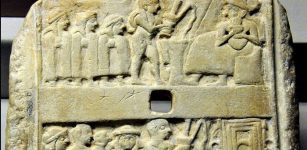 Ur – One Of The Largest And Most Important Cities Of Ancient Mesopotamia
Featured Stories | Jul 28, 2021
Ur – One Of The Largest And Most Important Cities Of Ancient Mesopotamia
Featured Stories | Jul 28, 2021 -
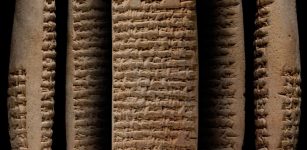 Mystery Of The Proto-Elamite Tablets – Cracking The World’s Oldest Undeciphered Writing
Artifacts | Oct 29, 2012
Mystery Of The Proto-Elamite Tablets – Cracking The World’s Oldest Undeciphered Writing
Artifacts | Oct 29, 2012 -
 Nimerigar: Mythological Race Of Little People Living In Wyoming
Featured Stories | Jun 7, 2017
Nimerigar: Mythological Race Of Little People Living In Wyoming
Featured Stories | Jun 7, 2017 -
 Was The Discovery Of Biblical Abel’s Giant Grave In Syria Covered-Up?
Biblical Mysteries | Oct 28, 2014
Was The Discovery Of Biblical Abel’s Giant Grave In Syria Covered-Up?
Biblical Mysteries | Oct 28, 2014 -
 Dwarf Ninja Ukifune Jinnai’s Toilet Assassination Of Uesugi Kenshin
Featured Stories | Dec 15, 2019
Dwarf Ninja Ukifune Jinnai’s Toilet Assassination Of Uesugi Kenshin
Featured Stories | Dec 15, 2019 -
 Mystery Of Andreas Rill: Was He A Time Traveler, Holy Man Or An Unidentified Prophet In Disguise?
Featured Stories | Oct 25, 2018
Mystery Of Andreas Rill: Was He A Time Traveler, Holy Man Or An Unidentified Prophet In Disguise?
Featured Stories | Oct 25, 2018 -
 Myths And Legends Reveal Ancient Turtle Worship Linked To The Creation Of The World
Featured Stories | Jun 24, 2020
Myths And Legends Reveal Ancient Turtle Worship Linked To The Creation Of The World
Featured Stories | Jun 24, 2020 -
 Mythical Stymphalian Birds: Terrible Winged Maidens With Birds’ Feet
Featured Stories | Feb 27, 2017
Mythical Stymphalian Birds: Terrible Winged Maidens With Birds’ Feet
Featured Stories | Feb 27, 2017 -
 Can Aikman Mounds In Arkansas Explain The Hopewell Culture’s Mysterious Disappearance?
Featured Stories | Apr 30, 2019
Can Aikman Mounds In Arkansas Explain The Hopewell Culture’s Mysterious Disappearance?
Featured Stories | Apr 30, 2019 -
 Sir Francis Walsingham: Spymaster, Politician And Trusted Adviser To Queen Elizabeth I
Featured Stories | Nov 25, 2019
Sir Francis Walsingham: Spymaster, Politician And Trusted Adviser To Queen Elizabeth I
Featured Stories | Nov 25, 2019 -
 Wolstenholme Towne: Lost Virginia Settlement – Destroyed, Abandoned And Forgotten
Featured Stories | Jun 26, 2018
Wolstenholme Towne: Lost Virginia Settlement – Destroyed, Abandoned And Forgotten
Featured Stories | Jun 26, 2018 -
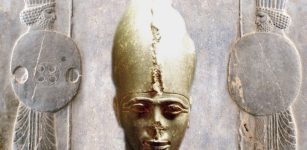 Pharaoh Psamtik III’s Deadly Encounter With Cambyses II Of Persia Ended The 26th Dynasty Of Egypt
Featured Stories | Apr 16, 2021
Pharaoh Psamtik III’s Deadly Encounter With Cambyses II Of Persia Ended The 26th Dynasty Of Egypt
Featured Stories | Apr 16, 2021 -
 Secrets Of The Freemasons – Masonic Symbols Reveal Worship Of Ancient Mother Goddesses
Ancient Symbols | Jun 18, 2018
Secrets Of The Freemasons – Masonic Symbols Reveal Worship Of Ancient Mother Goddesses
Ancient Symbols | Jun 18, 2018 -
 Siege Of Masada – The Last Stand Against The Roman Empire
Civilizations | Mar 27, 2017
Siege Of Masada – The Last Stand Against The Roman Empire
Civilizations | Mar 27, 2017 -
 Samurai Swords: Katana And Wakizashi And Their Long Tradition
Ancient Traditions And Customs | Aug 6, 2018
Samurai Swords: Katana And Wakizashi And Their Long Tradition
Ancient Traditions And Customs | Aug 6, 2018 -
 Pyramid Texts Of Ancient Egypt That Charted Journey Of Pharaohs Into Afterlife
Egyptian Mythology | Feb 26, 2020
Pyramid Texts Of Ancient Egypt That Charted Journey Of Pharaohs Into Afterlife
Egyptian Mythology | Feb 26, 2020 -
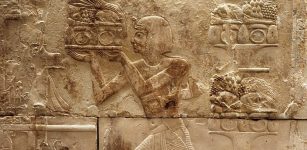 Pharaoh Ramesses I Whose Mummy Was Stolen And Displayed As A Freak Of Nature For 130 Years
Featured Stories | Jul 31, 2021
Pharaoh Ramesses I Whose Mummy Was Stolen And Displayed As A Freak Of Nature For 130 Years
Featured Stories | Jul 31, 2021 -
 Mystery Of King Solomon’s Mines: An Unsolved Ancient Enigma
Featured Stories | Aug 9, 2018
Mystery Of King Solomon’s Mines: An Unsolved Ancient Enigma
Featured Stories | Aug 9, 2018




